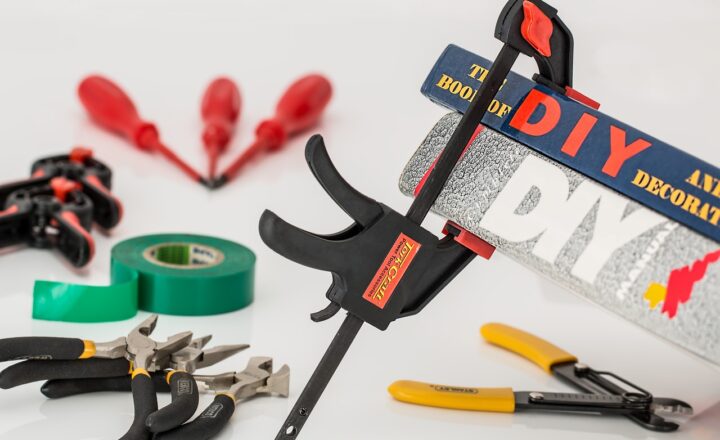The Ultimate Guide to Using Arduino for Home Automation: Making Everyday Life Easier
November 13, 2024

Home automation has become one of the most sought-after innovations in modern living. With the rise of smart home technology, integrating automated systems into our homes has never been more accessible or affordable. Arduino, an open-source electronics platform, stands at the forefront of this revolution. This guide will walk you through how to use Arduino for home automation projects that will make your daily life easier, more efficient, and more enjoyable.
1. What is Arduino?
Arduino is an open-source electronics platform that combines hardware and software components, making it an excellent choice for both beginners and advanced users looking to create interactive projects. The Arduino board acts as a microcontroller that can read inputs (like sensors) and convert them into outputs (like turning on lights or motors). The versatility of Arduino enables it to keep up with various applications, especially in home automation.
The primary components of Arduino include:
- Arduino Board: The physical board, often an Arduino UNO or Mega, where circuits are built.
- Arduino IDE: The software used to write code and upload it to the board.
- Components and Sensors: Items like temperature sensors, motion detectors, and relays that enhance the functionality of your automation projects.
With an Arduino, the possibilities for home automation are limited only by your creativity.
2. Why Choose Arduino for Home Automation?
Arduino offers several advantages that make it a suitable choice for home automation:
- Cost-Effective: Arduino boards and components are relatively inexpensive compared to other home automation systems on the market.
- Customizable: With Arduino, you can create tailor-made projects that suit your specific needs, from simple light controls to complex integrated systems.
- Community Support: The Arduino community is vast and active, offering countless resources, tutorials, and forums to help you overcome challenges.
- Scalability: Start small with a single project and expand to multiple devices as your skills and needs grow.
Whether you want to control your lights, monitor your home, or set up a complete home automation system, Arduino can help you achieve those goals quickly and efficiently.
3. Essential Components for Arduino Home Automation
Before starting your first project, it’s crucial to gather the necessary components for your Arduino home automation setup. Here’s a list of common components:
- Arduino Board: Choose an Arduino UNO or Mega depending on your project complexity.
- Relay Module: Allows you to control high-voltage devices such as lights or appliances.
- Motors: For automation tasks like opening blinds or door locks.
- Sensors: Such as PIR sensors for motion detection, temperature sensors for climate control, and humidity sensors.
- Wi-Fi or Bluetooth Module: Enables wireless communication for remote control and monitoring via smartphones or computers.
- Power Supply: Ensure you have a reliable power source for your Arduino setup.
- Jumper Wires and Breadboard: For easy circuit connections during prototyping.
Having these components will allow you to tackle a range of home automation projects, from simple to complex.
4. Getting Started with Your First Home Automation Project
Let’s dive into creating your first home automation project: controlling LED lights with your Arduino.
Project Overview: You will create a simple circuit with an Arduino board that controls an LED based on a button press. This serves as a foundational project that can be expanded to control more lights or devices.
Components Needed:
- Arduino Uno or Mega
- LED light
- 220-ohm resistor
- Push-button switch
- Jumper wires
Step-by-Step Instructions:
- Wiring: Connect the LED to a digital pin on the Arduino through a 220-ohm resistor. Connect the button switch to another digital pin.
- Code: Open the Arduino IDE and write the following code:
“`
const int buttonPin = 2; // Pin for button
const int ledPin = 13; // Pin for LEDint buttonState = 0; // Variable to hold button state
void setup() {
pinMode(ledPin, OUTPUT);
pinMode(buttonPin, INPUT);
}void loop() {
buttonState = digitalRead(buttonPin);
if (buttonState == HIGH) {
digitalWrite(ledPin, HIGH); // Turn LED on
} else {
digitalWrite(ledPin, LOW); // Turn LED off
}
}
“` - Upload: Connect your Arduino board to the computer and upload the code using the IDE.
- Test: Press the button to see if the LED lights up. This simple setup can be expanded to control multiple LEDs or devices!
By completing this project, you’ll have a solid understanding of how the Arduino framework works, which you can use as a stepping stone to more intricate automation systems.
5. Advanced Home Automation Projects Using Arduino
Once you are comfortable with basic automation projects, consider implementing these advanced Arduino home automation ideas:
- Smart Garden System: Automate watering plants using soil moisture sensors and a relay-controlled water pump.
- Smart Thermostat: Use temperature sensors to monitor your home’s climate and control heating or cooling systems.
- Home Security System: Set up a motion detection system with cameras and alarms that send notifications to your phone.
- Voice-Controlled Automation: Integrate Arduino with voice assistants like Amazon Alexa or Google Assistant for hands-free control.
These projects not only enhance your home’s functionality but also provide excellent learning experiences as you explore the capabilities of Arduino further.
6. Conclusion
Arduino gives you the power to design and implement a wide variety of home automation solutions tailored to your needs. By starting with simple projects and gradually incorporating more complexity, you can transform your living space into a smart home without breaking the bank. The satisfaction of creating your own automated systems is unmatched, and with endless resources and community support at your fingertips, you’re well on your way to making everyday life easier.
If you’re ready to dive into the world of Arduino home automation, gather your components, and start building amazing projects today!





